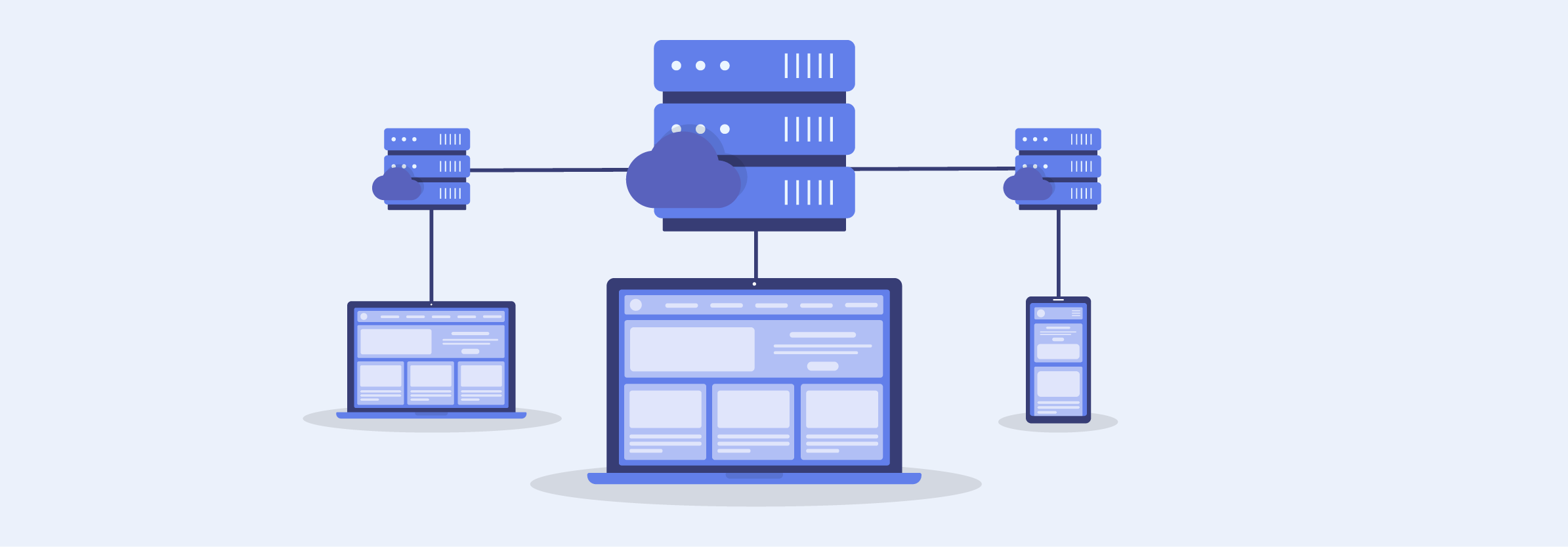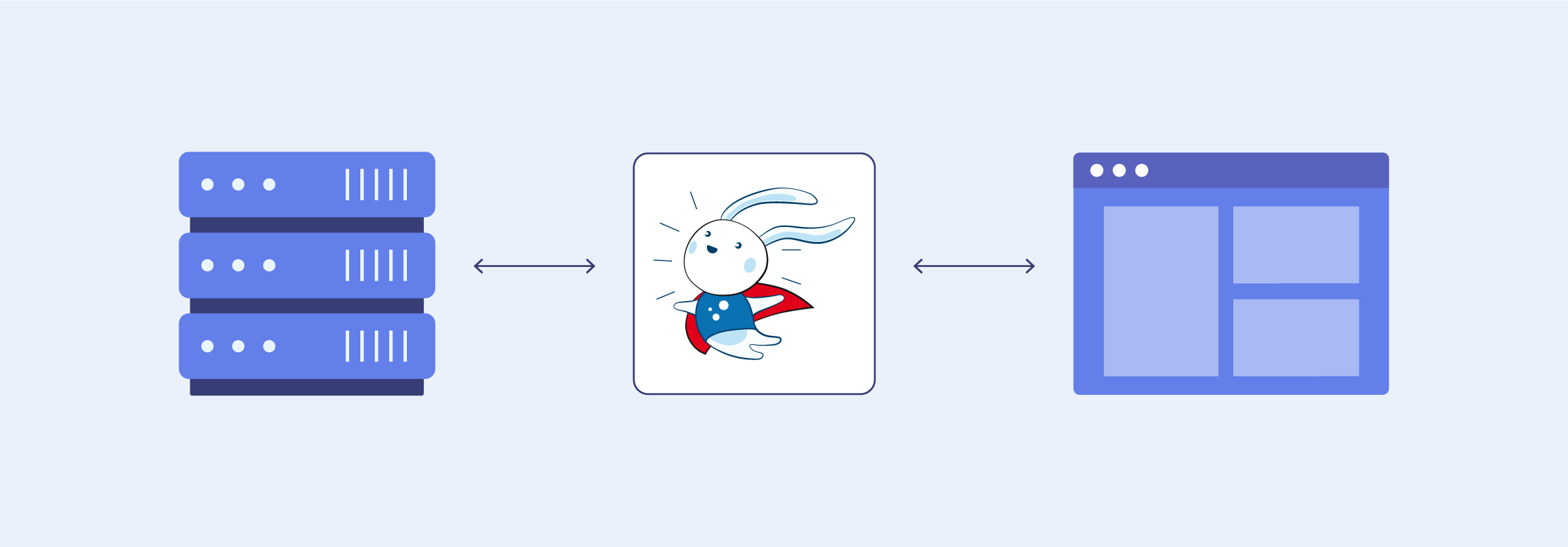
Magento Managed Server Performance: 8 Site Speed Strategies
Improving the performance of your Magento managed server enhances the speed and flexibility of your e-commerce store. This optimization is essential to prevent slow-loading webpages, which can negatively impact user experience, resulting in higher bounce rates and potential customer loss. Let’s explore 10 key strategies to boost your Magento site's speed and overall managed server performance.
-
Top 8 Site Speed Strategies to Enhance Magento Managed Server Performance
-
Choosing the Right Hosting for Magento Managed Server Hosting
Key Takeaways
-
Discover effective strategies to boost Magento site speed and managed server performance.
-
Explore the significance of choosing a reputable hosting provider to ensure optimal performance and scalability.
-
Discover the advantages of implementing a Content Delivery Network (CDN) to distribute website content globally.
-
Learn how to configure server-side tools like Memcached or Redis to enhance the overall performance of your Magento site.
What is Magento Managed Server Hosting?
Magento Managed Server Hosting is a specialized service that simplifies the technical aspects of running a Magento e-commerce website. This service includes server management and enhancing Magento security to keep your site safe.
Here's what you can expect from Magento Managed Server Hosting:
-
Server Management: Experienced professionals manage server maintenance to ensure they operate efficiently.
-
Security: Reliable security measures are in place to protect your website from potential threats.
-
Server Setup: Assistance is provided in configuring servers to meet your Magento store's requirements.
-
Maintenance: Magento developers handle tasks like installing updates, creating backups, and monitoring your store 24/7 to keep it stable and secure.
-
Support: Dedicated support personnel are available to help you quickly if you encounter any issues or need improvements.
-
Performance Optimization: Experts work to enhance your website's speed and performance, ensuring a better user experience. It also includes using user-friendly tools tailored to improve the performance of Magento-based online stores.
Top 8 Site Speed Strategies to Enhance Magento Managed Server Performance
1. Test your Magento 2 Store

-
Front-End Testing: Before implementing any updates, conduct thorough testing. Utilize tools such as Google PageSpeed Insights, GTmetrix, or Magento's built-in performance tools to monitor and assess your site's speed. It ensures the detection of bottlenecks and areas requiring enhancement.
-
Backend Assessment with New Relic: New Relic is a valuable tool for backend evaluation. It allows for the monitoring and analysis of server-side performance. Addressing these issues beforehand leads to a smoother and faster user experience.
-
Comparative Analysis: If certain modules or pages exhibit slow performance, consider testing them on a development (dev) site or comparing them with a demo site that employs your Magento theme. This comparative analysis aids in pinpointing issues and determining whether they stem from the update itself or are specific to your server's configuration or content.
2. Optimize Your Magento 2 Hosting

-
Select a Reputable Hosting Provider: A reliable and well-supported Magento hosting provider is essential. Opt for a hosting service known for its expertise in Magento, as they are better equipped to address the specific needs of your server requirements.
-
Consider Cloud Hosting: Magento Cloud hosting offers several advantages for Magento. It provides flexibility, scalability, and redundancy. This configuration can significantly enhance the speed and stability of your Magento hosting environment.
-
Increased Memory for Performance: Investing in increased memory enhances your website's performance. It provides the resources needed to handle higher traffic volumes without experiencing slowdowns.
-
Ensure System Requirements Compatibility: Familiarize yourself with Magento's system requirements. This knowledge ensures your hosting environment aligns with Magento's software and technical specifications.
3. Implement a Content Delivery Network (CDN)

-
Enhancing Global Content Distribution: Utilize a Content Delivery Network (CDN) to distribute website content across multiple servers worldwide. This strategic approach reduces latency by delivering content from the nearest server to the user's location. It resulted in improved overall page loading speed.
-
Competitor Research with DNS Dumpster: Employ DNS Dumpster to research your competitors or websites of interest. This tool lets you identify the Content Delivery Network (CDN) they use.
-
Optimizing CDN Usage: Focus on serving CDN content primarily in countries where most conversions occur rather than targeting overall traffic. This approach optimizes your costs and resources, preventing unnecessary spending on serving CDN content to non-converting traffic. For example, bots in regions like India and Russia.
4. Remove Unused Magento 2 Features

Heavy websites strain servers by demanding more resources to load and function. Removing unnecessary features lightens the website, reducing the server's burden. It allows the server to operate more efficiently, serving web pages faster and optimizing resource allocation.
Examples of typical Magento modules that may be unnecessary include extra languages, offline shipment and payment options, backup, and captcha. It also includes RSS, MSRP, Send Friend, Weee, multi-shipping, checkout agreements, and various Magento product types, depending on your store's needs.
-
Utilize the Google Chrome Coverage Tool: Employ the coverage tool available in Google Chrome to identify any plugins loading files unnecessarily or inactive files. Search for names of plugins that, despite being inactive, continue to load files.
-
Consider Dependencies: Recognize that Magento may contain dependencies, meaning some features cannot be disabled if another plugin relies on them. Exercise caution and discernment in determining which Magento features are unnecessary and can be turned off without affecting the site's functionality.
5. Configure Memcached or Redis

Database Load Reduction: To reduce the load on your server database and enhance performance, consider configuring Memcached or Redis.
-
Memcached: Memcached is a general-purpose distributed memory-caching system designed to accelerate dynamic web applications by alleviating database load. It primarily supports simple key-value storage, making it suitable for straightforward data. It scales horizontally, allowing the addition of more machines to the Memcached pool as demand increases. It is non-persistent; all stored data is lost if the system restarts.
-
Redis: Redis offers a broader feature set while serving as a caching system like Memcached. It functions as an in-memory data structure store, serving as a database, cache, and message broker. It can be scaled horizontally and vertically, with vertical scaling involving the addition of more power (CPU/RAM) to an existing machine. It also provides various methods for persistent storage, allowing configuration based on your specific needs.
Note: if your hosting provider does not offer Memcached or Redis, consider migrating to another provider.
6. Optimize JavaScript and CSS

-
Reducing HTTP Requests: To enhance Magento Managed Server performance, consider consolidating CSS and JavaScript files to reduce the number of HTTP requests. Magento facilitates merging CSS and JS files through the admin panel or extensions, decreasing Magento load times.
-
Identifying Unnecessary Files: Utilize Google Chrome's coverage tool to pinpoint any extra files. Subsequently, eliminate these files from templates using XML updates.
7. Enable Varnish Cache

-
Improving Server Response Times: Elevate server response times through code optimization, reduction of database queries, and efficient utilization of caching mechanisms. A faster Time To First Byte (TTFB) positively influences overall site speed.
-
Implement Varnish Cache: Varnish Cache is a web application accelerator designed to significantly enhance your Magento 2 site's performance. When activated, it caches HTTP responses, effectively alleviating the server's load and Magento page loading.
Note: To ensure accurate configuration tailored to your site's unique requirements, consult an expert. You can also explore if your host provides a Graphical User Interface (GUI) and logging options.
- Hosting Provider Support Significance: Ensure your hosting provider employs Varnish Cache. Varnish Cache serves as a fundamental element for optimal site performance, and its absence could signal underlying optimization issues with your current hosting provider.
8. Additional Considerations

-
Check Updates: Whether you rely on Magento support or an internal team, adopt a proactive stance toward updates. Regularly check for available updates and establish a structured process for their deployment to minimize potential risks.
-
Consider Custom Solutions for Efficiency: If a specific extension appears overly complex or inefficient, contemplate replacing it with a custom solution. Developing a tailored version that precisely aligns with your requirements can significantly reduce unnecessary functions.
-
Fine-Tune Server Settings for Magento: Adjust PHP settings, enable GZIP compression, and optimize database configurations to enhance Magento server performance.
Choosing the Right Hosting for Magento Managed Server Hosting
1. Reliability and Infrastructure
- Prioritize a hosting provider with a proven track record for uptime and a robust infrastructure to support high visitor traffic.
- Ensure seamless Magento site migration and integration capabilities for existing projects and databases.
2. Security Measures
- SSL certificates, firewalls, and DDoS protection are crucial for safeguarding sensitive customer data in an ecommerce environment.
- Evaluate security features offered by hosting providers like MGT Commerce to mitigate potential threats.
3. Customization and Scalability
- Opt for a hosting platform that offers customization options and scalability to accommodate business growth and changing needs.
- For optimal performance and security, consider server stack technologies (Apache, Nginx, and PHP versions).
4. Hosting Plans and Support
- Assess hosting plans regarding bandwidth, Magento pricing, and support services like chat and phone assistance.
- Prioritize providers with a strong support team for prompt assistance during server issues or site migrations.
5. Hosting Types and Configurations
- Understand the differences between VPS hosting, cloud servers, and dedicated hosting to match control and resource requirements.
- Evaluate server configurations—CPU cores, SSD storage, and bandwidth—to ensure they align with your needs.
6. Ecommerce Considerations
- For online transactions, prioritize server locations, SSL certificates, and PCI compliance for secure handling of customer information.
- Explore reviews and recommendations to understand the advantages and drawbacks of various hosting providers.
7. Balancing Hosting Factors
Ultimately, the best choice involves balancing infrastructure, security, support, and scalability to align with business goals and needs.
FAQs
1. What factors should I consider when selecting a Magento hosting platform for my business?
When choosing a hosting platform, consider price, reliability, customization, and integration. Ensure it supports your visitor volume, SSL certificates, and options like Elasticsearch. Evaluate its benefits for your sites, products, and business. Installation and web hosting plans should also align with your needs.
2. How do I ensure a smooth site migration when changing Magento hosting providers?
When transitioning hosting providers, prioritize that migration support. Check for SSL certificates, firewall configurations, and server location options that align with your needs. Additionally, verify if they offer IP whitelisting and have data centers in advantageous locations.
3. What key security features should I look for in a hosting plan for an ecommerce site?
When considering hosting plans, prioritize features like firewalls, DDoS protection, SSL certificates, and PCI compliance for secure handling of customer information during transactions.
4. What should I consider while assessing managed hosting plans and their pricing?
While evaluating hosting plans, focus on bandwidth, pricing, support team availability (such as chat and phone assistance), and server configurations like CPU cores, SSD storage, and bandwidth.
5. How can I choose between different hosting types and configurations?
To make an informed choice, differentiate between VPS hosting, cloud servers, and dedicated hosting based on control, server resources, and SSL certificates. Additionally, assess their server locations to align with your budget and hosting plan. Contact customer support to clarify queries and explore packages suitable for your clients and sales goals.
6. Why are infrastructure and server reliability crucial for a managed hosting solution?
Reliable infrastructure ensures uptime, mitigates downtime risks, and supports server monitoring, which is critical for managed hosting services. This reliability enhances the success of hosting resources for your website or ecommerce platform.
7. How do I ensure server security and protection against attacks for my online business?
Look for hosting providers offering firewalls, SSL certificates, and DDoS protection to safeguard against malware, brute-force attacks, and data breaches. Assess their hosting resources, malware, hardware, and security patches to ensure a secure hosting environment.
Summary
Magento managed server ensures optimized performance for Magento e-commerce platforms. It provides an efficient hosting server option businesses can leverage to safeguard against slow loading times and enhance user experience. This article covered essential strategies for boosting Magento site speed and managed server performance. Explore the benefits of Magento optimised hosting to elevate your ecommerce platform's server performance.




